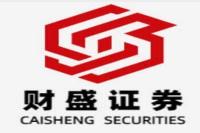Unlocking Global Markets: Navigating China's 2025 Agricultural Export Quota System
Meta Description: Deep dive into China's 2025 agricultural export quotas, exploring allocation processes, eligibility criteria, application strategies, and future outlook. Learn how to successfully navigate this crucial system for exporting agricultural products from China. Keywords: Agricultural Export Quotas, China Export Quotas, 2025 Agricultural Export Policy, Agricultural Export License, China Trade Policy
Imagine this: you're a thriving agricultural business in China, brimming with high-quality produce ready to conquer global markets. But there's a gatekeeper – the complex, nuanced system of export quotas. Successfully navigating this system isn't just about paperwork; it's about strategic planning, understanding the nuances of Chinese trade policy, and demonstrating your company's excellence. This isn't a simple hurdle; it's an opportunity to showcase your competitive edge and establish your brand on the world stage. But where do you even begin? This comprehensive guide cuts through the red tape, providing you with the insider knowledge and practical strategies you need to secure your share of the 2025 agricultural export quota and unlock unprecedented growth for your business. We'll unravel the intricacies of the allocation process, explore the criteria for eligibility, and arm you with the tools to make a compelling case for your company. Get ready to transform your agricultural exports from a dream to a reality! This is more than just a guide; it's your roadmap to success in the dynamic landscape of international agricultural trade.
Agricultural Export Quotas: A Deep Dive into the 2025 Allocation
The Ministry of Commerce (MOFCOM) recently announced the initial allocation of agricultural export quotas for 2025, highlighting a strategic focus on efficiency and quality. This announcement emphasizes a shift towards rewarding businesses that consistently demonstrate high performance and maintain robust quality control. It's not just about getting a slice of the pie; it's about proving you deserve the biggest piece. The process, while seemingly bureaucratic, is designed to optimize the use of national resources and ensure the global competitiveness of Chinese agricultural exports. This isn't just about numbers; it's about building trust and ensuring quality on the global stage.
The initial allocation sets the stage, but the real action lies in the secondary allocation. This is where things get interesting! Local commerce departments play a critical role in this second phase, carefully reviewing applications and making strategic decisions based on several key factors. Let's break it down:
- Completion Rate: A stellar track record speaks volumes. Consistent performance and meeting previous quota targets are crucial indicators of reliability and efficiency.
- Operational Capacity: This goes beyond just having the goods; it's about demonstrating a robust supply chain, efficient logistics, and the ability to meet international demand. Think global, act local, but deliver globally.
- Product Quality: This is non-negotiable. Meeting stringent quality standards is paramount. International buyers expect top-notch produce, and failing to deliver will hurt your chances in the long run.
- Brand Reputation: A strong brand synonymous with quality and reliability is a significant asset. It's the golden ticket to securing a larger share of the quota.
Think of it as a competitive sporting event: the initial allocation is the qualifying round, and the secondary allocation is the final match. Only the strongest contenders make it through.
Navigating the Secondary Allocation: A Strategic Approach
Securing a significant portion of the secondary allocation requires a well-defined strategy. It's not enough to simply submit an application; you need to make a compelling case that showcases your strengths and aligns with the MOFCOM's objectives. Here's a breakdown of essential steps:
-
Meticulous Documentation: Prepare a comprehensive application package that leaves no stone unturned. This includes detailed financial statements, quality control certifications, and compelling evidence of your brand's reputation. Think of it as your business's resume – make it shine!
-
Building Relationships: Networking is key. Cultivating strong relationships with local commerce departments and relevant industry associations can significantly enhance your chances. Remember, it's not just about what you know, but who you know.
-
Proactive Communication: Maintain open and proactive communication with the relevant authorities throughout the process. This demonstrates your commitment and allows for timely clarification of any questions or concerns.
-
Transparency and Compliance: Operate with transparency and ensure strict adherence to all regulations. Any hint of non-compliance can be fatal to your application.
Key Players in the Quota Allocation Process
The process isn't a solo journey. Several key players influence the allocation:
- Ministry of Commerce (MOFCOM): The ultimate authority, setting the overall quotas and guidelines.
- Local Commerce Departments: Responsible for secondary allocation and oversight within their respective regions.
- Export Licensing Agencies: Issue the actual export licenses once quotas are allocated.
Understanding the roles of these players is crucial for effective navigation of the system.
The Importance of Timely Reporting and Quota Adjustment
The MOFCOM emphasizes the importance of timely reporting on quota usage. Regular updates allow for dynamic adjustments, ensuring efficient resource allocation and preventing wastage. This underscores the importance of accurate forecasting and efficient operational management.
Agricultural Export Quotas: A Case Study
Let's consider a hypothetical example: "Sunshine Farms," a leading exporter of high-quality Mandarin oranges, consistently meets its export targets and maintains rigorous quality control. They have a strong brand reputation and a well-established distribution network. As a result, they are highly likely to secure a substantial portion of the secondary allocation. Conversely, a company with a history of missed targets and quality issues is significantly less likely to succeed.
Frequently Asked Questions (FAQs)
Q1: What types of agricultural products are subject to export quotas?
A1: The specific products covered vary from year to year but often include sensitive items like live animals, certain fruits, and timber products. Check the official MOFCOM announcements for the most up-to-date list.
Q2: How can I apply for an export quota?
A2: The process starts with registering with relevant authorities and then submitting a detailed application during the designated timeframe. The exact procedures and requirements are outlined in official MOFCOM notifications.
Q3: What happens if I don't use my allocated quota fully?
A3: Unused quotas may be reallocated or recovered. Efficient planning and accurate forecasting are crucial.
Q4: What are the penalties for violating quota regulations?
A4: Penalties can be severe, ranging from warnings to suspension of export licenses. Strict adherence to regulations is essential.
Q5: Are there any resources available to assist with the application process?
A5: Yes, local commerce departments and industry associations often provide guidance and support. It's always best to seek professional advice when navigating the complexities of export regulations.
Q6: What is the future outlook for agricultural export quotas in China?
A6: The trend indicates a continued focus on quality, efficiency, and sustainable practices. Companies that demonstrate excellence in these areas are well-positioned for success in the future.
Conclusion
Navigating China's agricultural export quota system requires strategic planning, meticulous preparation, and a deep understanding of the regulatory landscape. While the process may seem daunting, the rewards for successful applicants are substantial. By focusing on quality, efficiency, and building strong relationships, businesses can significantly enhance their chances of securing a significant share of the export quotas and unlocking the vast potential of global markets. Remember, this isn't just about exporting goods – it's about building a lasting legacy in the global agricultural landscape. So, buckle up, do your homework, and get ready to take on the world!



